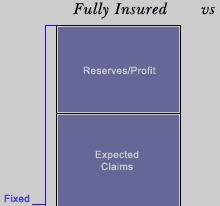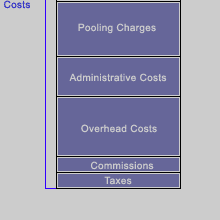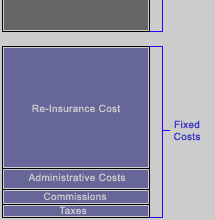

|
Self-Funded employee benefit plans offer many advantages versus fully-insured plans:
Comparison of Fully Insured Plans vs Self-Funded Plans
Fully insured plans consist of Fixed Costs only…if your claim levels are lower than expected, the carrier earns more profit. Self-funding gives an employer the opportunity to participate in the profits if a plan experiences moderate to low claim levels. Premiums paid, overhead and administrative costs are also significantly lower than in a fully insured plan.
Mechanics of Self-Funding The idea of self-funding may be somewhat new to many companies, however, the concept has been in existence since the 1940's. This alternative funding approach is gaining popularity with employers as they examine ways to gain control of spiraling health care costs. An employer can eliminate or reduce costs associated with a more traditional fully insured plan, such as premium tax, reserving requirements, risk and profit charges, retention and marketing expenses. The employer controls funds which would normally be remitted to the insurer as premium resulting in an improved cash flow. The success and safety of a self-funded plan is enhanced by Stop Loss Insurance. Employers who self-fund normally set-up a trust to handle loss-funds (claims) monies and engage a Third Party Administrator, such as Alternative Benefit Plans, to handle administration of the Plan and Payment of claims.
Stop-Loss Insurance Stop Loss Insurance coverage protects self-funded plans from unpredictable claim expenses. Stop Loss Insurance is provided in two forms, the combination of which will limit the self-funded maximum liability to a pre-determined level. These coverages are known as Specific and Aggregate Insurance. With the protection offered by both Specific and Aggregate Stop Loss Insurance, the maximum annual cost for self-funding a benefit program is determined at the beginning of the benefit year. Funds that are not used for claim expenses reduce the cost of the plan for that year, and the monies saved are an asset of the employer's plan.
Specific Stop Loss Insurance Specific Stop Loss Insurance offers a self-funded plan protection against large individual claims. The average Specific Stop Loss level is set at approximately 10% of an employers expected claims. After eligible plan benefits for any individual reach the Specific Stop Loss level, all eligible benefit payments above that point are covered by the Specific Stop Loss Insurance.
Aggregate Stop Loss Insurance Aggregate Stop Loss Insurance offers a self-funded plan protection by limiting the self-funded total claims liability to a pre-determined level. This maximum annual claims liability is not insurance premium, but rather money which could be needed to pay claims. A loss fund is set up through which claims are paid on an "as needed" basis. Claims are not expected to exceed this limit. However, if claims do exceed this limit of liability, excess claims are insured by Aggregate Stop Loss Coverage.
Aggregate Accommodation The Aggregate Accommodation is an optional component of the Aggregate Excess Loss Insurance. The Aggregate Accommodation provides money to the Employer's health plan account during any month in which accumulated self-funded paid Losses (claims) exceed a pre-determined amount (usually by $2,000). Should accumulated claims in future months fall below the year-to-date accumulated claims liability maximum, the employer will repay the advance up to the accumulated maximum claims liability.
Aggregate Excess Terminal Liability If at the end of a Certificate Period the insured terminates its self-funded plan, the Aggregate Deductible and the Loss Claim Basis for the Aggregate Excess Loss Insurance will be modified similarly as follows: The Loss Claim Basis means, for the Certificate Period, only the actual amount of benefits incurred by a Person during the Certificate Period and paid during the Certificate Period or within 90 days immediately thereafter. The revised Aggregate Deductible will be the sum of: (a) three times the twelfth month Accommodation Point, plus (b) whatever the Aggregate Deductible would have been for the Certificate Period if the insured had not terminated its self-insured Plan.* * Actual wording differs by stop-loss carrier, see contract for details.
|

Call Alternative Benefit Plans for Details
P.O. Box 921849
Norcross, GA 30010
(800) 241-7319
or
Click here to submit your question via e-mail.



